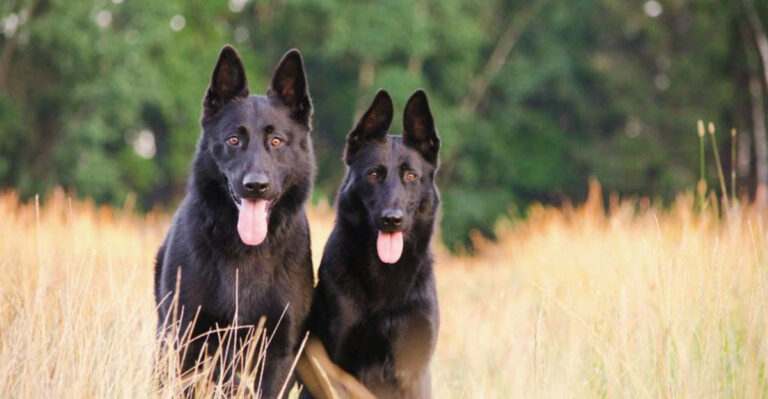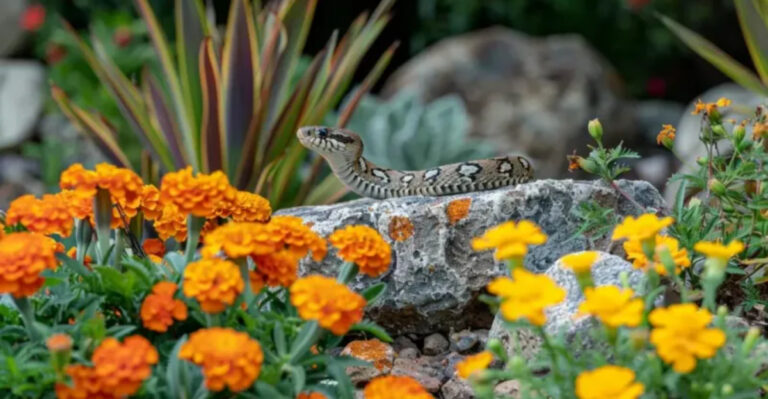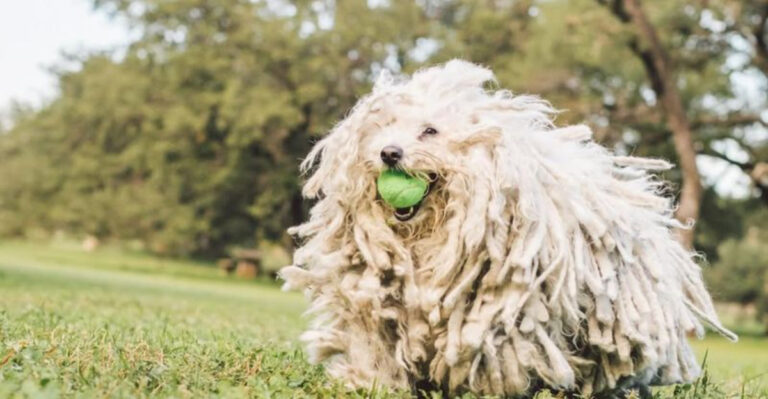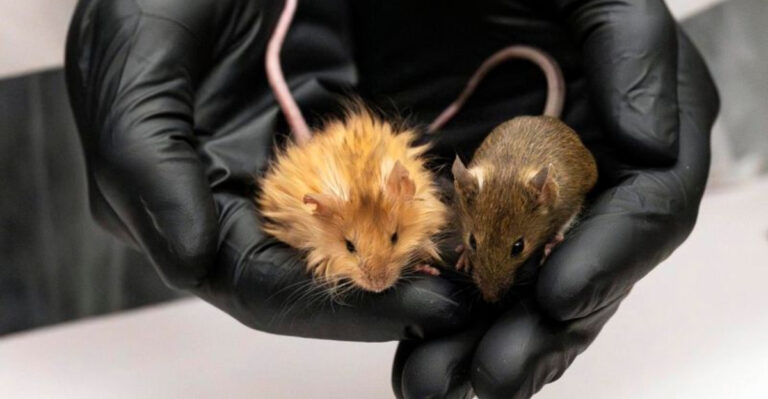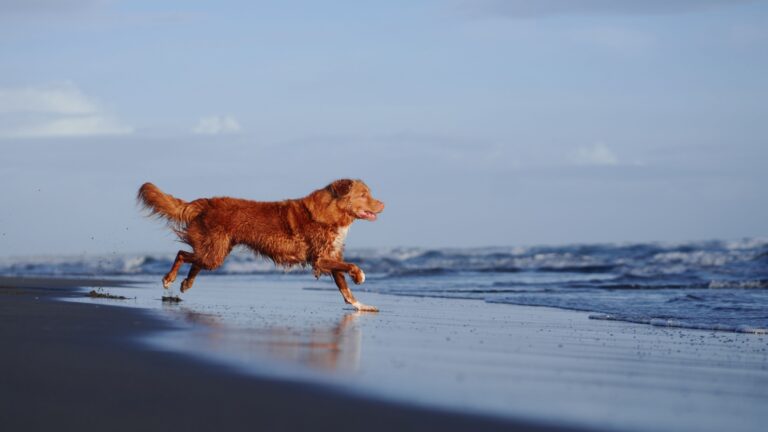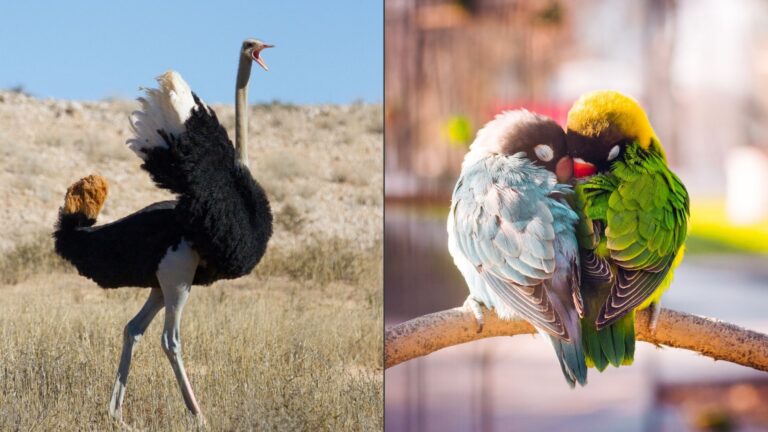8 Colorful Frogs And Amphibians And 7 That Vanish In Dull Colors
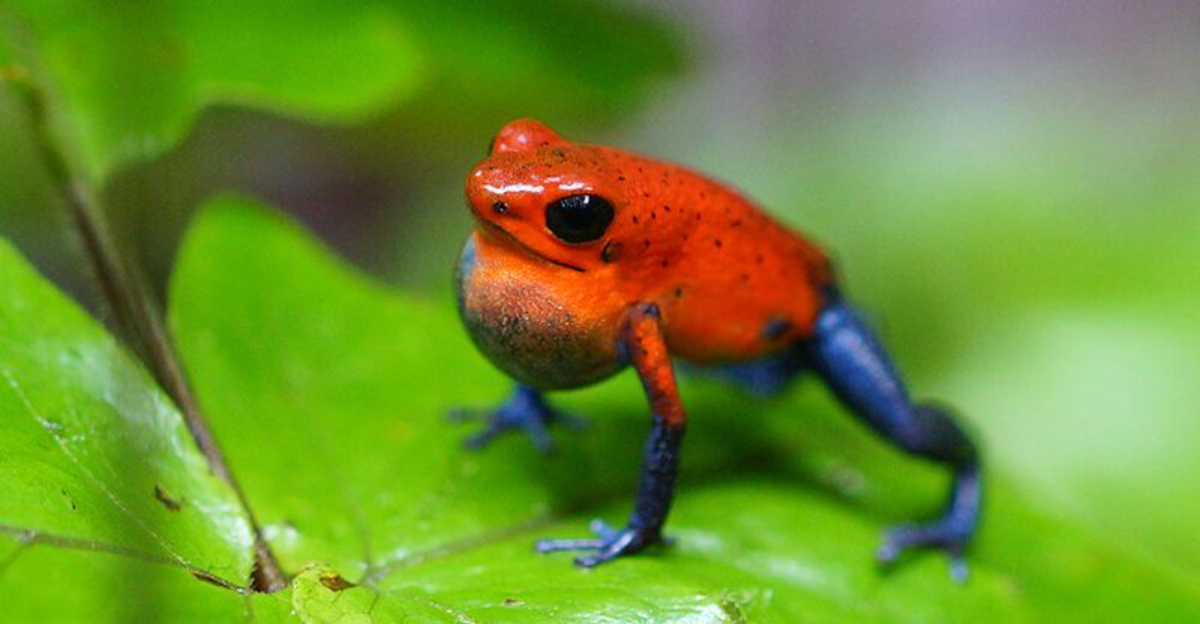
The world of amphibians is filled with surprising color strategies. Some frogs and salamanders sport eye-popping hues that scream ‘danger!’ to predators, while others blend seamlessly into their surroundings with camouflage so perfect you might step right past them.
These color adaptations aren’t just for show – they’re survival tools that have evolved over millions of years.
1. Electric Blue Day Geckos That Light Up The Forest
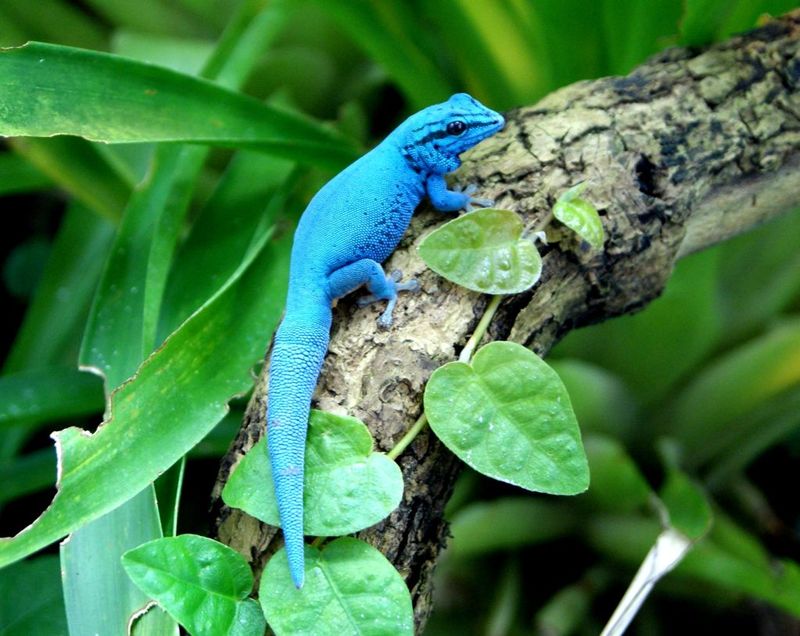
Like tiny fragments of the sky come to life, these Madagascar natives stop visitors in their tracks. Their vibrant azure bodies practically glow against green foliage.
Despite their bold appearance, these little lizards are surprisingly shy. They dart away at the slightest disturbance, making their brilliant coloration all the more precious when spotted in the wild.
2. Strawberry Poison Dart Frogs With Warning Colors
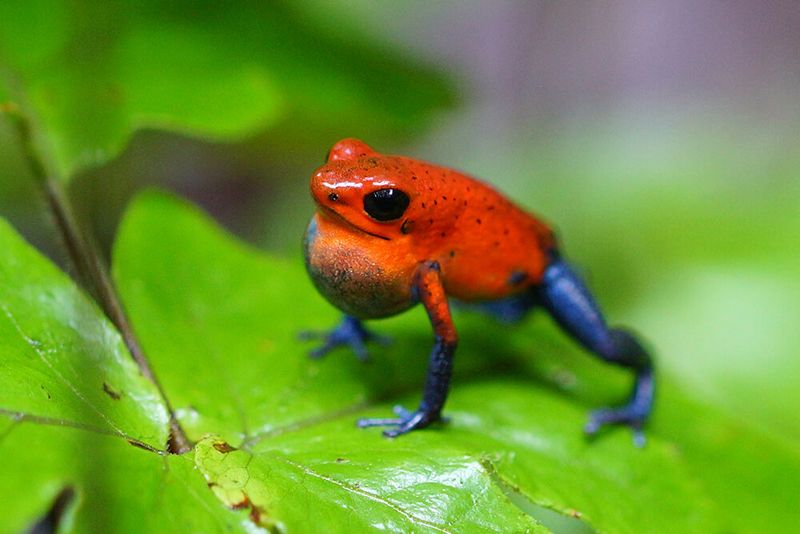
Barely larger than a thumbnail, these scarlet showstoppers pack a powerful toxic punch. Their brilliant red bodies scream ‘don’t touch me’ to any would-be predators.
Found in Central American rainforests, their color intensity actually varies based on their diet. The more toxic alkaloids they consume from certain insects, the brighter their warning colors become!
3. Golden Poison Frogs That Shimmer Like Treasure
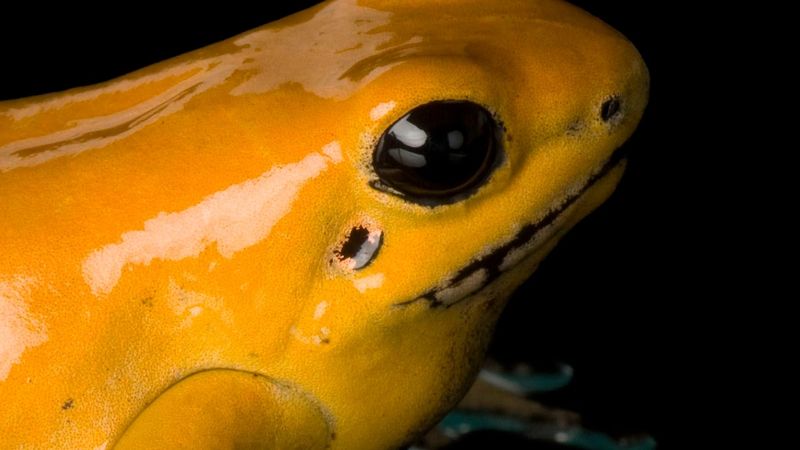
Worth their weight in gold – and just as fatal! These Colombian jewels sport a metallic yellow coat that practically glows in the dim rainforest.
A single frog contains enough poison to kill ten grown men. Indigenous peoples have used their toxins on blowdart tips for centuries. Their brilliant color serves as nature’s perfect warning label.
4. Rainbow-Backed Chinese Fire-Bellied Toads
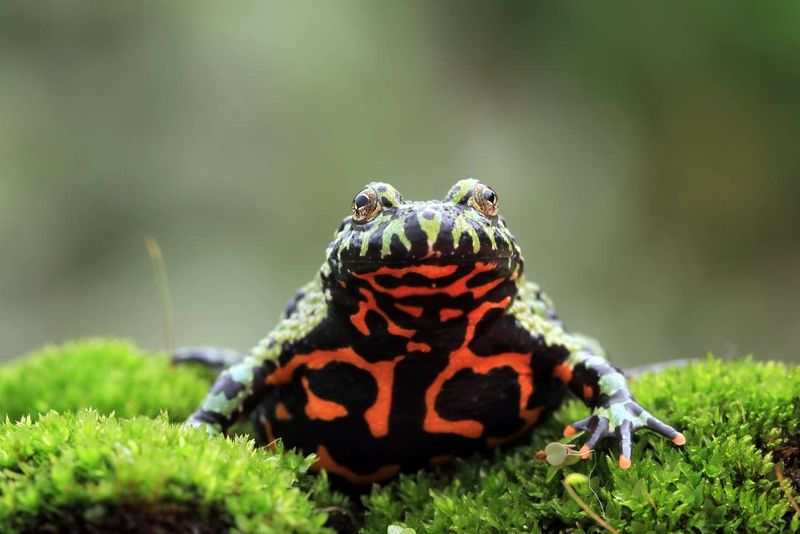
Talk about a split personality! These Asian amphibians sport mossy green backs that blend with vegetation, hiding their true secret.
Flip them over and – surprise! – their bellies explode with fiery reds and oranges patterned with black. When threatened, they arch their bodies to flash this warning coloration, a defensive move called the ‘unken reflex’.
5. Blue-Legged Mantella Frogs With Neon Socks
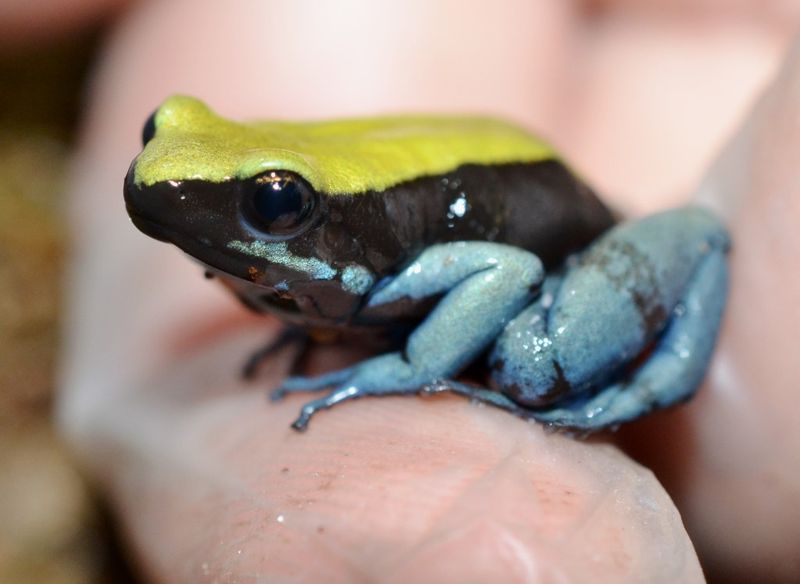
Imagine wearing electric blue knee-socks with a black outfit – that’s this Madagascar frog’s fashion statement! Their striking limbs pop against their dark bodies like tiny neon signs.
Unlike many colorful frogs, these stylish hoppers are only mildly toxic. Their bold leg coloration might be more about attracting mates than warning predators, proving that even in the frog world, blue shoes turn heads.
6. Psychedelic Rock Frogs That Look Hand-Painted
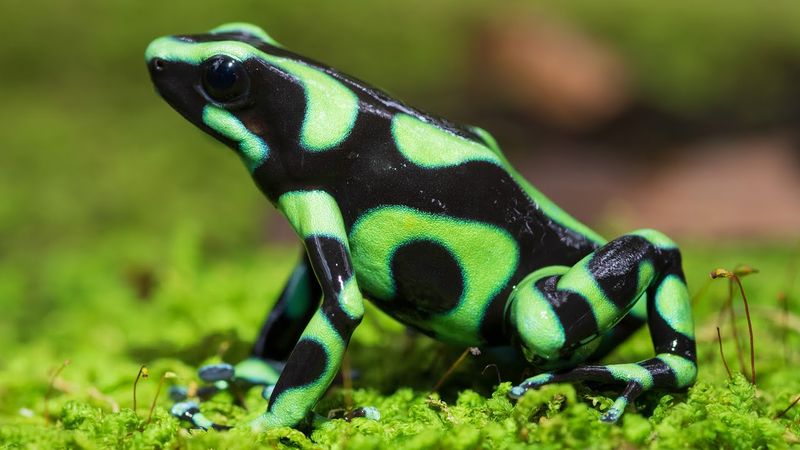
Mother Nature’s art project gone wild! These Vietnamese stunners sport swirling patterns of green, blue, and yellow that look like someone took a paintbrush to them.
Discovered only in 2010, their trippy coloration helps them disappear against lichen-covered rocks. Up close they’re unmistakable, but from a distance, their psychedelic patterns break up their outline – a groovy example of disruptive coloration.
7. Purple Frogs That Look Like Grumpy Potatoes
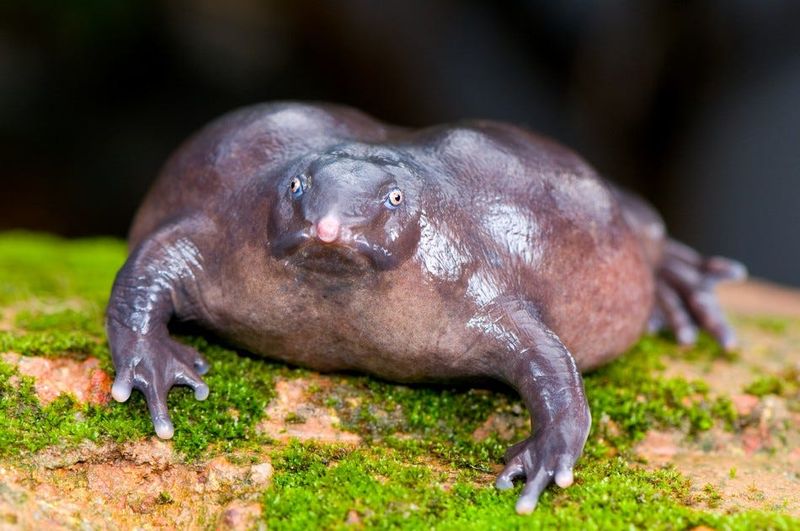
With a face only a mother could love, these bloated purple oddities spend most of their lives underground in India. They emerge for just two weeks annually during monsoon season to breed.
Their unusual purple-gray skin has a glossy sheen that’s immediately recognizable. Though not flashy like some tropical frogs, their distinctive coloration and bizarre shape make them one of the amphibian world’s strangest celebrities.
8. Red-Eyed Tree Frogs With Neon Green Bodies
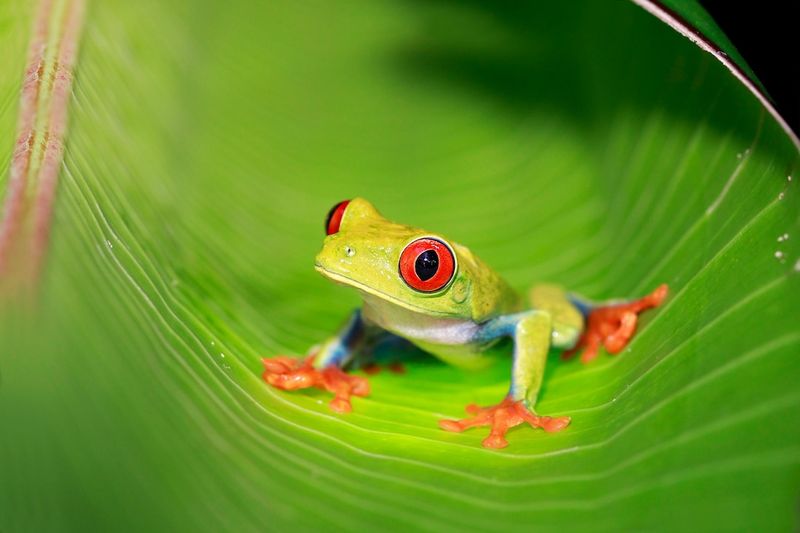
Bright crimson eyes and lime-green bodies have turned this rainforest frog into a Hollywood star. Bold colors aren’t just for show; they serve as a clever defense mechanism.
Sleeping frogs blend seamlessly with green leaves, hiding their vibrant hues. But when threatened, they flash those striking colors, creating a momentary distraction that helps them escape.
9. Brown Wood Frogs That Vanish Against Forest Floors
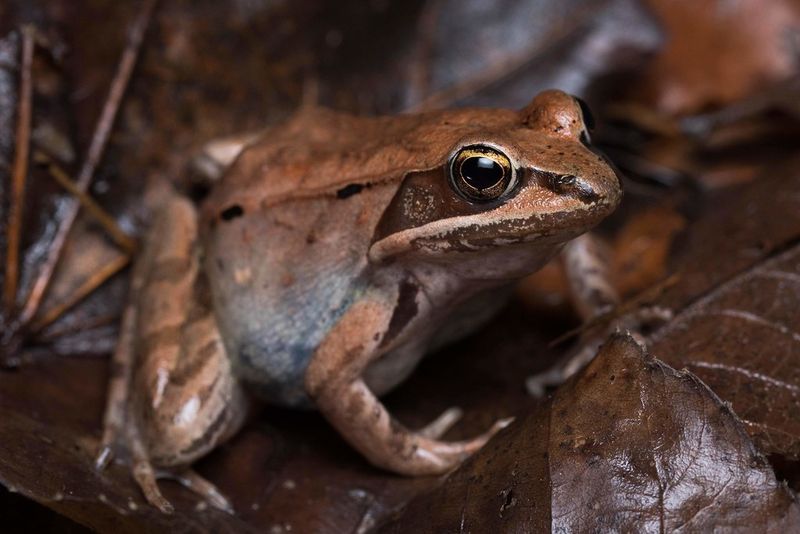
Masters of disappearing in plain sight, these woodland ninjas blend perfectly with fallen leaves and forest debris. Their mottled brown bodies mimic the dappled light patterns on forest floors.
These freeze-tolerant frogs can survive being mostly frozen solid during winter! Their understated coloration helps them warm up safely during spring thaws, when predators are actively searching for food after long winter fasts.
10. Muddy-Colored Olms That Haunt Cave Waters
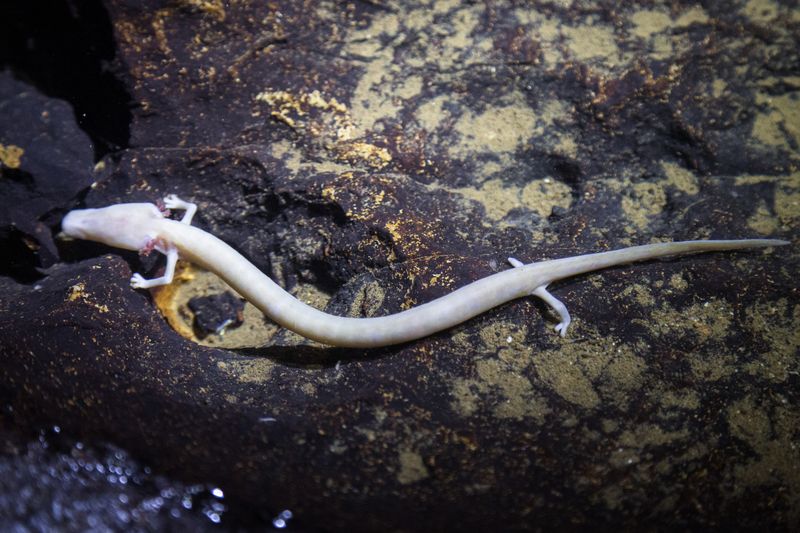
Legends once painted them as baby dragons, but these pale, pinkish-tan salamanders are real creatures thriving in dark underground caves. Lacking light, they developed flesh-colored bodies perfectly suited to their pitch-black world.
Navigation relies on a keen sense of smell and the ability to detect electrical fields. Locals dubbed them ‘human fish’ because of their skin’s uncanny resemblance to light human complexions.
11. Earthy Surinam Toads With Leaf-Like Bodies
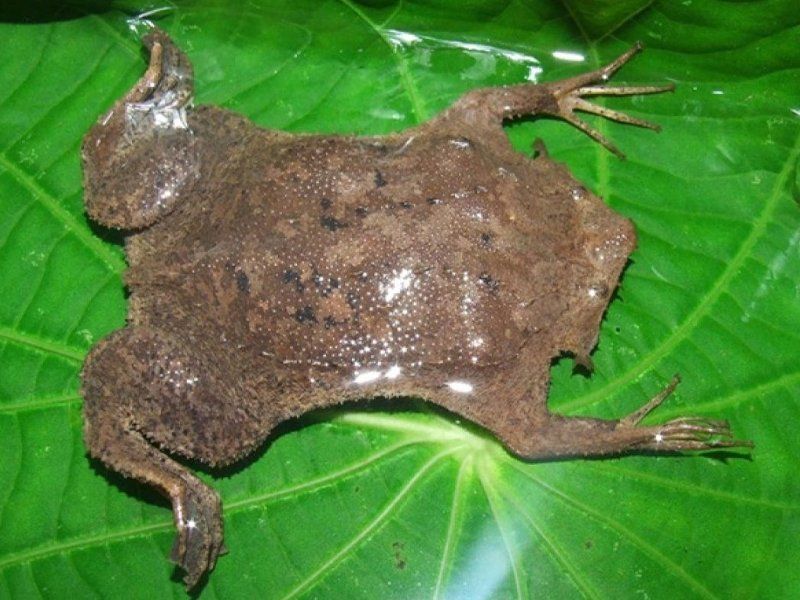
Flat as pancakes and colored like dead leaves, these aquatic oddities are nature’s ultimate disguise artists. Their mottled brown bodies disappear completely against murky pond bottoms.
Famous for their bizarre breeding habit – females carry developing eggs in honeycomb-like pockets on their backs! Their drab coloration helps protect both mom and babies during this vulnerable time, making them nearly invisible to predatory fish.
12. Dusty Spadefoot Toads That Match Desert Sands
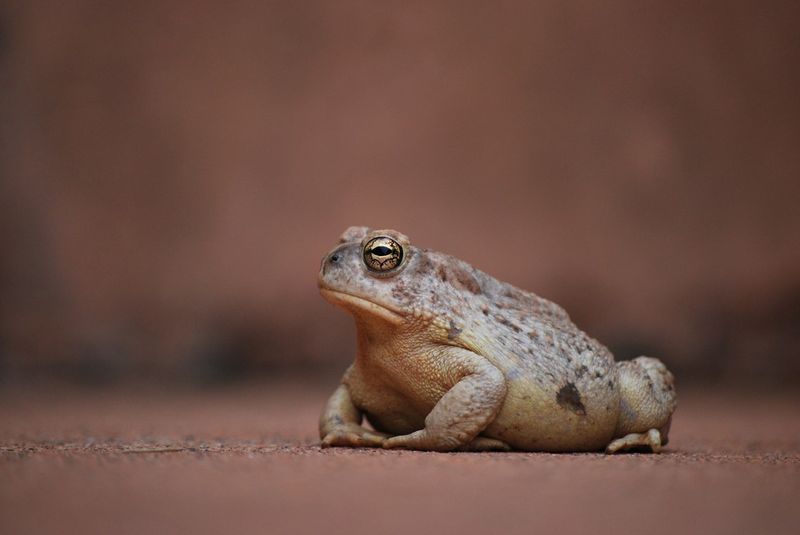
Sandy beige with scattered dark freckles, these desert specialists are practically invisible against their arid homes. Their earth-toned wardrobe is perfect for life in dusty environments.
Armed with specialized ‘spades’ on their hind feet, they dig backward into soil with remarkable speed. Their subtle coloration works in tandem with this burrowing behavior – by the time a predator spots their camouflaged body, they’ve already disappeared beneath the sand!
13. Cryptic Glass Frogs With See-Through Skin

Peek-a-boo! These remarkable amphibians have translucent skin that reveals their internal organs. Their lime-green backs fade to completely transparent bellies where beating hearts and digesting meals are visible.
This unusual coloration strategy helps them vanish against backlit leaves. Predators looking up see only scattered green patches that match surrounding foliage, with light passing through their transparent parts creating the perfect leafy illusion.
14. Gray Tree Frogs That Match Lichen-Covered Bark
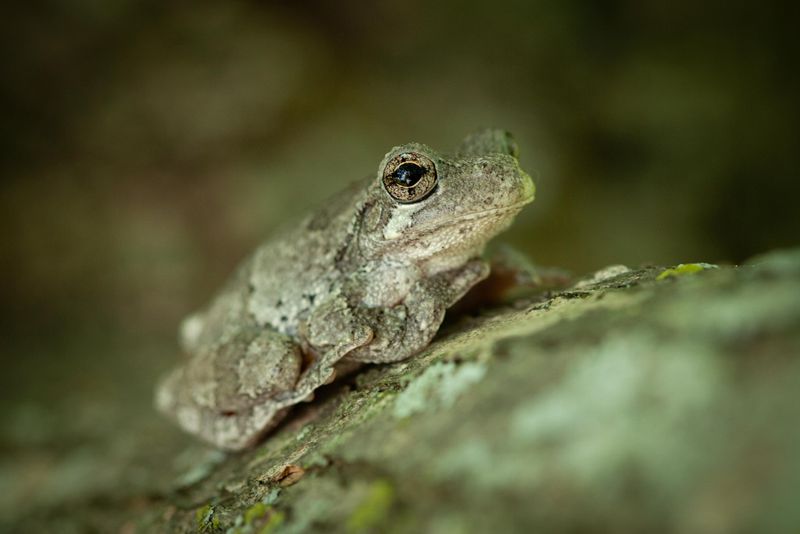
Masters of disguise, these North American tree-dwellers effortlessly shift from gray to green, matching their surroundings. Warty, textured skin helps them blend seamlessly with lichen and rough bark.
Staring into the forest, you might notice two large eyes peeking from a bumpy tree trunk. Camouflaging abilities allow them to vanish in plain sight, adapting to different forest backgrounds.
15. Plain-Brown Caecilians That Resemble Earthworms
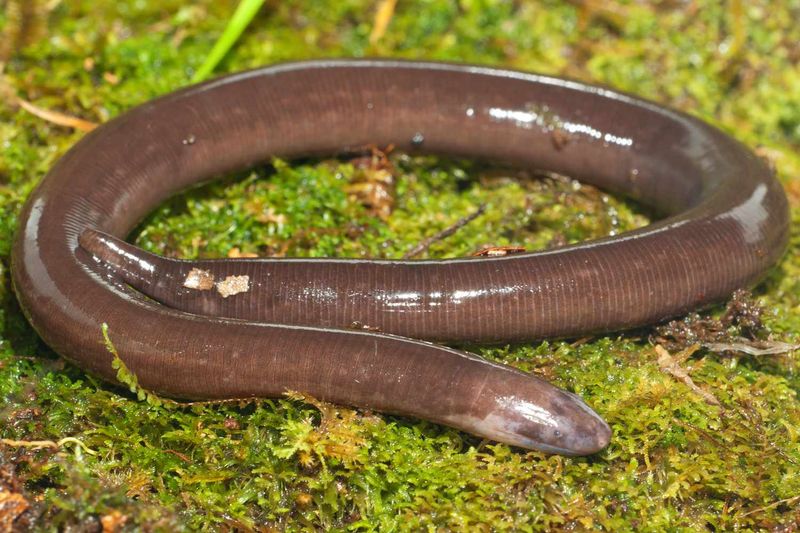
Mistaken for worms by most people, these legless amphibians sport uniform brown or grayish coloration that helps them blend into soil. Their streamlined bodies lack any distinctive markings.
Most caecilians spend their lives underground, where flashy colors would be wasted. Their understated appearance is perfect for their burrowing lifestyle. Some species haven’t seen sunlight for thousands of generations, making bright colors an unnecessary evolutionary expense.

